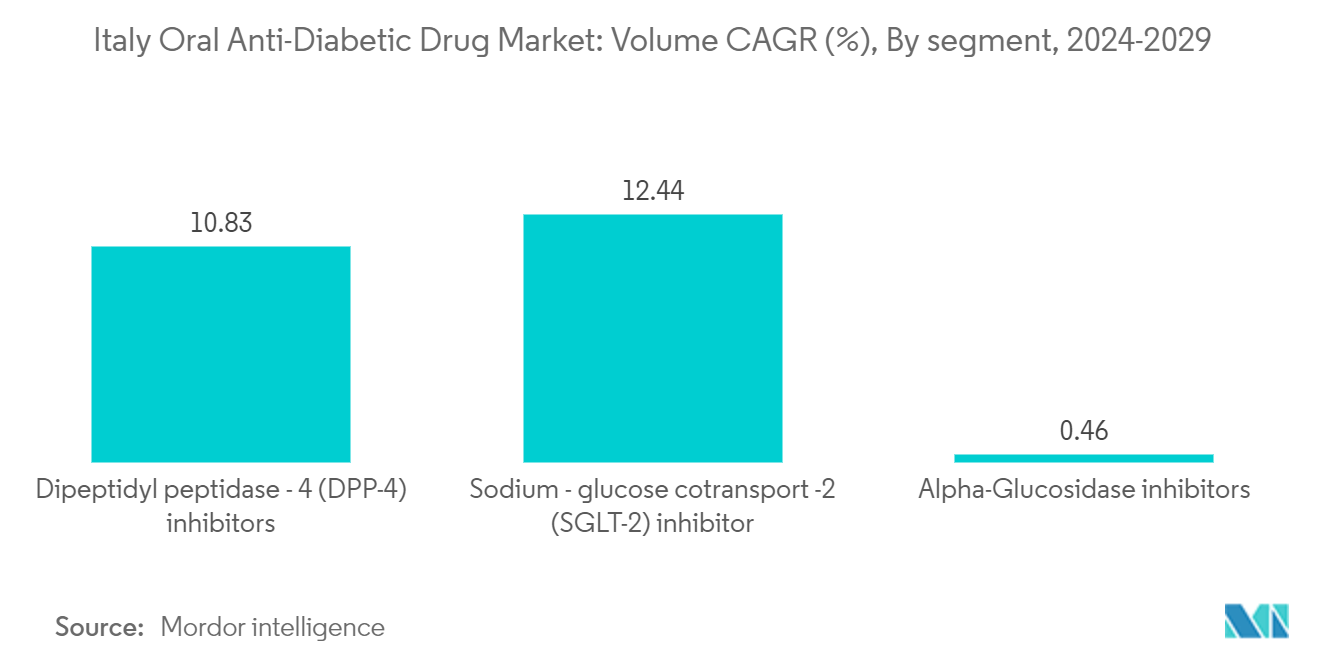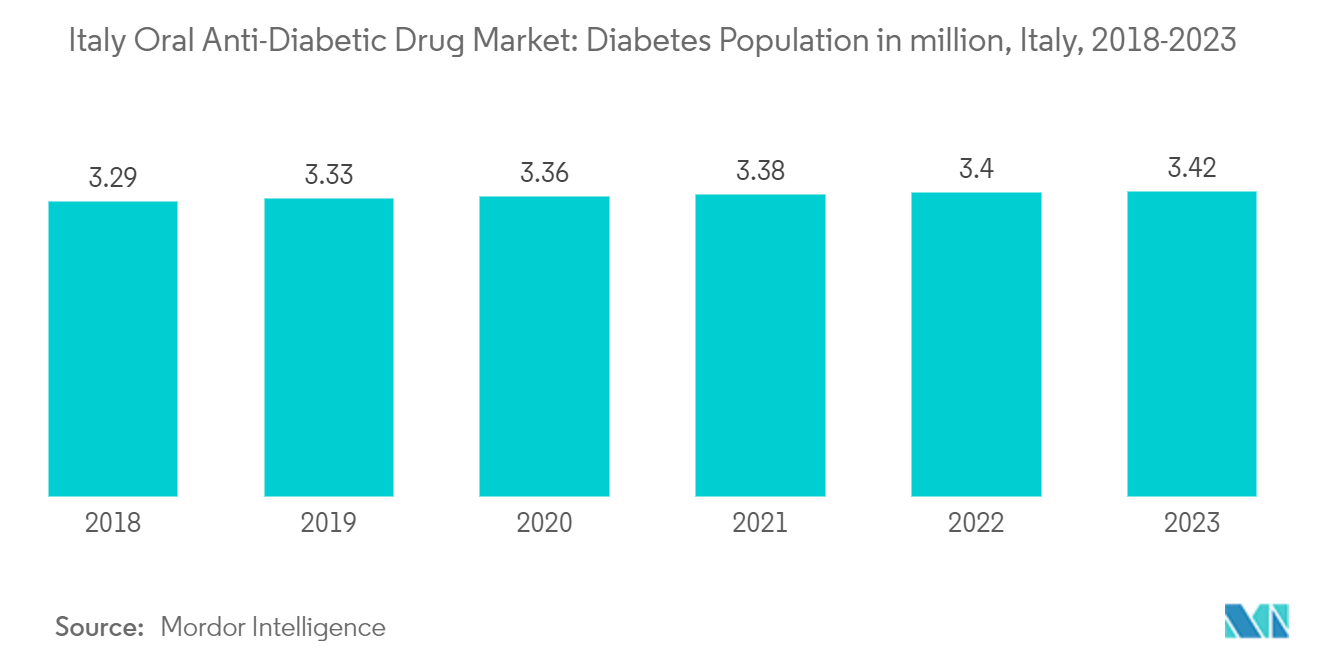Market Trends of Italy Oral Anti-Diabetic Drug Industry
Sodium-glucose Cotransport-2 (SGLT-2) inhibitor Segment Occupied the Highest Market Share in the Italy Oral Anti-Diabetic Drugs Market in current year
In terms of revenue, the Sodium-glucose Cotransport-2 (SGLT-2) inhibitor Segment is anticipated to lead the Italy Oral Anti-Diabetic Drugs Market and post a CAGR of over 11% during the course of the forecast year.
A class of pharmaceuticals known as the Sodium-glucose Cotransport-2 (SGLT-2) inhibitor Segment is used to treat type 2 diabetes, and several of these medications have also been licensed to treat obesity. The fact that this family of medications has a reduced risk of producing hypoglycemia than older insulin secretagogues like sulfonylureas or meglitinides is one of their advantages.
The National Health Program is set up into fundamental tiers of aid, each of which can be defined uniquely in each location. LEAs are how the National Health Program is organized. All medical aid programs provided by the INHS to citizens, with or without a patient's income-based partial contribution, are defined by LEAs. One of the major problems facing the Italian healthcare system is diabetes, a serious health issue.
The development of novel medications to give diabetic patients more treatment options has been driven by the disease's increasing incidence, prevalence, and progressive nature. Some of the potential prospects for the companies in the Italian diabetes medications market include the introduction of several new products, expanding international research collaborations for technological advancement, and raising public awareness of diabetes.

Increasing Diabetes Population in Italy is driving the market.
Italy witnessed an alarming increase in the prevalence of diabetes in recent years. Patients with diabetes require many corrections throughout the day to maintain nominal blood glucose levels, such as oral anti-diabetic medication or ingestion of additional carbohydrates by monitoring their blood glucose levels. The rate of newly diagnosed Type 1 and Type 2 diabetes cases is seen to increase, mainly due to obesity, unhealthy diet, and physical inactivity. The rapidly increasing incidence and prevalence of diabetic patients and healthcare expenditure are indications of the increasing usage of diabetic drugs.
Oral anti-diabetic medications have been made available globally and are advised for usage when type 2 diabetes therapy needs to be escalated along with lifestyle modification. Due to the wide range of efficacy, safety, and modes of action that oral medicines have, they are frequently the first treatments employed in the treatment of type 2 diabetes. Diabetes patients can minimize their risk of complications and maintain control of their illness with the use of anti-diabetic medications.
Throughout the rest of their lives, people with diabetes may need to take anti-diabetic medications to manage their blood sugar levels and prevent hypo and hyperglycemia. Oral anti-diabetic medications have higher acceptance than insulin, which improves adherence to therapy. They also have the advantages of easier control and lower costs. The Italian National Healthcare Service (NHS) ensures universal coverage for all citizens. People living with diabetes have access, with no out-of-pocket expenditure, to all the medicines, devices, and medical services they need.
Overall, Italy has a well-developed system of diabetes care, with numerous diabetes centers throughout the country and treatment free at the point of delivery. The Italian health system is highly decentralized, with most administrative and organizational powers held by the Regions. The National Diabetes Plan defines priorities and provides guidelines to improve the quality of diabetes care with a patient-centered focus.
It is therefore anticipated to drive the category expansion during the forecast period because of the aforementioned factors.


